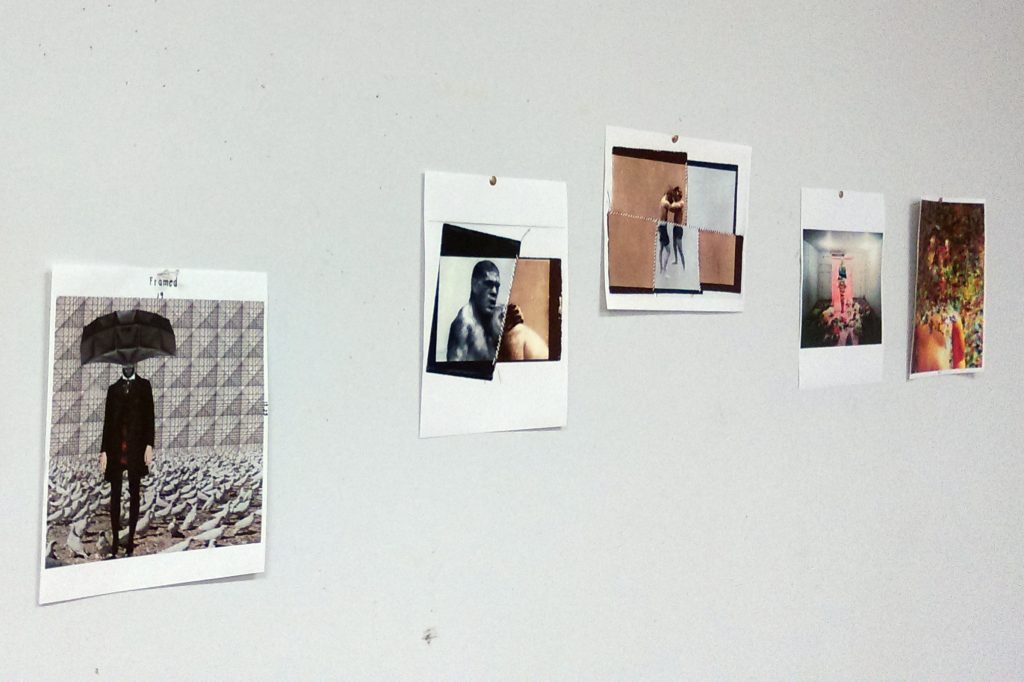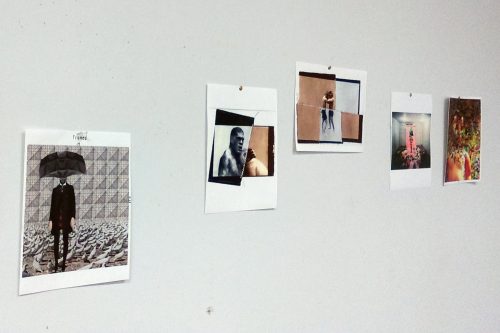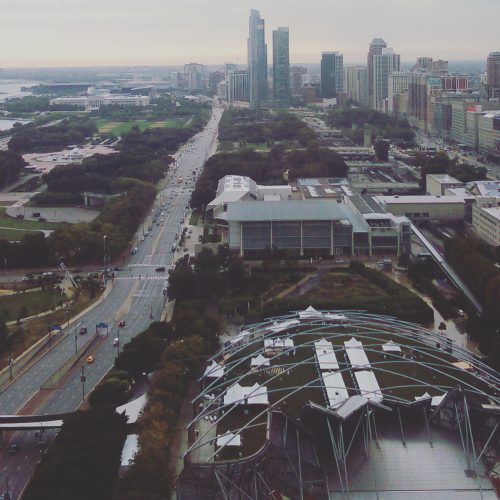
On Curating an Exhibition
As you may have read in my previous entries, this semester I am putting together an exhibition of Columbia College student work for the spaces of ThoughtWorks, a Chicago-based technology firm with a commitment to social issues. As the elements of this exhibition are finally starting to come together, I thought it would be a good moment to share more about what has been involved in this process as well as the perspective I’ve gained through this experience.

Doing a preliminary layout in my studio with print-outs of participating artists’ work.
Of course, first and foremost, trying to collect and group the work of others alongside making my own work has been a challenge for me this semester. It’s difficult to imagine how many moving parts are involved in the making of an exhibition until the work is actually underway. Thus, for the sake of clarity, I think the best form for me to review both the process and my experience would be a list. If you’ve ever considered curating yourself, I hope that this list may be helpful in any future endeavors!
- A Newfound Relationship-This exhibition project emerged from ThoughtWorks’ inviting my faculty advisors–Matthew Shenoda and Fo Wilson–to develop a relationship between Columbia and the firm by way of displaying student work in their newly renovated spaces in downtown Chicago. Ever aware of the potential for even deeper engagement, Matthew and Fo devised the idea of having a Columbia student take charge of organizing such an exhibition as a curatorial project. I was fortunate to be considered to pilot this program by Fo and Matthew and eagerly welcomed the opportunity, even with no previous background in curation.
- The Beginnings of Collaboration-With the decision of moving forward now made, Matthew, Fo, and I met with representatives from ThoughtWorks in their space (see breathtaking view below) to talk more about their interests–from social justice to free and open access to the internet–and assess the installation possibilities. This meeting really set the tone for all of our interactions since, with their being incredibly enthusiastic and receptive to our ideas, and vice versa.

View from ThoughtWorks’ office.
- Developing a Theme – After this initial meeting and ThoughtWorks’ graciously arranging a call between one of their developers and me in the following days, I worked to develop a theme that would align with their organizational values. Again, maintaining an open and continuous dialogue amongst their liaisons, my advisors, and me truly made possible a natural collaboration.
- A Call for Artwork – As I’ve mentioned in some of my other posts, soliciting student work was one of the greatest challenges for me in this pilot exhibition project. Though it required a little more legwork on my part than I’d initially anticipated, I was eventually able to amass a very strong, cohesive collection of work through a combination of independent submissions and direct outreach to artists.
- A Theme Reimagined – Something I learned while collecting work from my peers is that, although you may begin with a theme in mind, the work can change the meaning of the exhibition. Now, I looked to the work to inform the theme and shifted my preconceptions of what the exhibition was about.
- A Pivotal Point – Though I have much left do in terms of logistics (making a checklist, labels, curatorial statement, installation schedule, etc.), there is a certain comfort in finally being at this point. Great work has been selected, the company has offered their support in every facet from installation to reception planning, and I am finally starting to see the pure gratification of accomplishing something on the horizon.
Clearly, there is still much more to come of this project, but for now I’m pleased to say that I’m happy with where I am and everything that has led me here.
